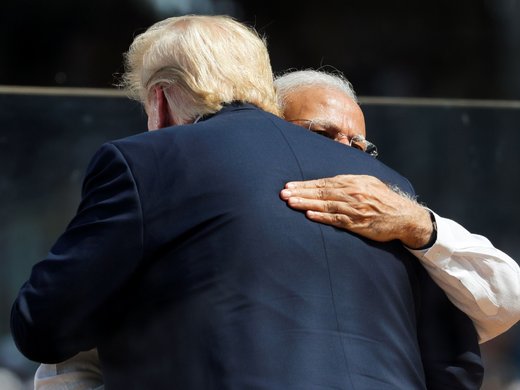In recent years, the world has seen rapid growth in China’s financial reach beyond its borders. Following the announcement of a “going out” strategy at the turn of the century, many Chinese enterprises have ventured to invest and operate abroad. After three decades as primarily a recipient of foreign direct investment (FDI), China has now emerged as a major FDI-originating country as well. Much of China’s foreign aid is closely entangled with its outgoing FDI, and it has also been rising. Since 2013, the Chinese government has been pushing for a new One Belt, One Road (OBOR) initiative, aiming to connect China with countries along the ancient Silk Road and a new Maritime Silk Road via infrastructure investment. In addition, since 2009, China has actively promoted the internationalization of its currency, the renminbi (RMB).
There has been a great deal of anxiety about the motivations behind China’s going out policy and its possible international consequences. Many view it as an expression of China’s international ambition and a strategy that threatens the existing international order; however, that is not the whole story. An equally important but often less understood issue is the role of China’s domestic politics and political economy in shaping its new activism in foreign financial policy. Moreover, it is unclear how successful the going out policy is. The complexity of China’s going out policy was the topic for a recent round table discussion hosted by the Centre for International Governance Innovation and the Foreign Policy Institute at the School of Advanced International Studies of Johns Hopkins University in Washington, DC.[1] Participants discussed a number of issues around two broad themes: the impact of domestic political economy on China’s foreign economic policy and the challenges for China’s external financial strategy — in particular, its OBOR initiative.
Domestic Political Economy and China’s Going Out Policy
China’s going out policy is no doubt part of its overall more activist foreign policy. But China’s domestic political economy has also been a major driving force. In particular, the growing problems with the old growth model, the changing relationship between the government and state-owned enterprises and banks, and the public dissatisfaction with the government’s management of its foreign reserves have all contributed to the increase in outgoing FDI and aid programs. Meanwhile, many unconventional characteristics of China’s going out programs, such as the ties between China’s foreign aid and exports, resource-backed financing of many investment projects and the low level of attention paid to corporate social responsibility by Chinese companies operating abroad, are deeply rooted in the domestic political and economic institutions.
Domestic politics has also shaped the way China promotes the international use of its currency. The control of credit has long been a crucial source of political power of the Chinese party-state. Maintaining that control is fundamental to preserving the Chinese Communist Party’s control over other actors in the country, including local governments and large enterprises. To minimize the threat to its power in the process of promoting RMB internationalization, Beijing has resorted to offshore RMB centres, in particular in Hong Kong. More recently, it has also looked to the OBOR initiative as a potential channel to expand the international use of the RMB.
The close relationship between domestic development in China and its foreign economic undertaking raises questions about how the economic slowdown in China may be affecting its outward investment and aid, as well as RMB internationalization.
A major driving force of China’s outgoing FDI has been its massive foreign reserves accumulated since the early 2000s. Invested mostly in US government debt, China’s reserves were generating low returns, incurring discontent from certain groups in China. Following the global financial crisis in 2008, this discontent turned into widespread anxiety that China’s holdings of US dollar assets would lose their value as a result of American economic problems and macroeconomic policies. A consensus emerged that China would be better off investing in other types of assets overseas. The amount of outgoing FDI and aid rose dramatically.
In the last couple of years, the economic slowdown in China has led to pessimistic forecasts of China’s economic performance for the foreseeable future. Multinational corporations are reallocating their resources. Financial market operators are betting on further RMB depreciation. Wealthy individuals in China are transferring their wealth out of the country, and China’s central bank is intervening in the foreign exchange market in order to maintain stability of the exchange rate. As a result, in 2015, China’s foreign reserves diminished dramatically from nearly US$4 trillion to US$3.33 trillion. January 2016 saw another drop of nearly US$100 billion. If this trend continues, it will undermine China’s desire and capability to fund its outgoing FDI and aid.
The economic slowdown and the financial market volatility in China are also decreasing the pace of RMB internationalization. The international use of the Chinese currency has expanded rapidly in the last few years. By 2015, the RMB had become the second-most-used currency in international trade and the fourth in global payment. Late last year, the International Monetary Fund agreed to add the Chinese currency to the basket of currencies that determine the value of the Special Drawing Right. But the RMB is not a currency widely held in the reserves of other countries. For the RMB to become an international reserve currency, China has to further liberalize its financial market. In fact, for many reformers in China, the main purpose of internationalizing the RMB is precisely to deepen financial liberalization in China.
However, such reforms are losing momentum in the current economic climate. The focus of Chinese leaders is now on keeping the economy growing at above 6.5 percent and on maintaining financial stability in the country. Voices arguing against further capital account opening have become louder and stronger, and even the reformers in the Chinese central bank are prioritizing prudential regulation over further market reforms and RMB internationalization. In a recent interview, the governor of the People’s Bank of China, Zhou Xiaochuan (2016), stated, “We are pragmatic, patient and determined with our goals, but do not target to move in a straight line toward reform goals.”
Challenges for China’s Going Out Policy
China’s fast-growing outgoing FDI and aid, in particular, its grand strategy of OBOR, have generated great enthusiasm in China and serious concern in some other parts of the world. The official rhetoric in China describes these as win-win arrangements — connecting the world, helping other developing countries grow their economy and improving China’s access to resources and markets abroad. Cynical outside observers view these initiatives and programs as part of China’s plan to build its sphere of influence in Asia and beyond, threatening the dominance of the United States in world politics. Both of these perspectives may be underestimating the challenges for China’s going out policy.
An important rationale for infrastructure investments, which account for large shares of China’s FDI and aid programs and constitute a central component of the OBOR initiative, is the dire need for infrastructure in many countries in Asia and elsewhere. It is not clear, however, how effectively Chinese investment is able to fill that gap.
First, the estimated gap is much larger than the funding provided by China either unilaterally or through China-led multilateral banks. The global infrastructure gap approaches US$1 trillion a year, dwarfing the US$40 billion of the Silk Road Fund and the US$100 billion of the Asian Infrastructure Investment Bank, both of which are designed to serve the OBOR initiative. Chinese officials have talked about leveraging government funding for private investments, but that will be difficult because of the shortage of bankable infrastructure projects that will likely generate sufficient returns to make the investment profitable and sustainable. While some projects (such as telecommunication networks and ports in strategic locations) may have no problem making enough revenue to pay back the investments, the same cannot be expected of other projects (such as roads going through poor rural areas, or water treatment plants). It is hard to imagine successful public-private partnerships for the latter.
Second, China’s infrastructure investment projects abroad also face potential political and security challenges. When investing in transnational infrastructure such as roads and rail, China will need to engage in prolonged, complex and costly negotiations with many stakeholders to ensure the smooth implementation of its investments. The challenge of political engineering may be far greater than mechanical engineering. In addition, many of the countries along the “belt” and “road” are plagued by conflicts, corruption and political instability. For instance, Pakistan has assigned 100,000 troops to protect Chinese investment projects, while US troops have protected a China-invested copper mine in Afghanistan (Clover and Hornby 2015).
Finally, while China’s going out strategy, in particular its OBOR initiative of connecting countries through infrastructure, is welcomed by some countries, others have not been as enthusiastic. In pluralistic societies, different interest groups have different priorities. For instance, while infrastructure may bring economic benefits, it may result in environmental damage. Opponents of projects can interrupt them in ways Chinese companies are unaccustomed to. In Indonesia, a high-speed railway largely financed by the China Development Bank was recently put on hold because of opposition and bureaucratic procedures. Furthermore, more than a few of China’s neighbours are wary of its political and strategic ambitions in the region. The recent acceleration of Chinese maneouvres in the South China Sea has only heightened the geopolitical tension in that area. Neighbouring countries are trying hard to strike a balance between economic and strategic calculations in dealing with China; their embrace of China’s OBOR initiative will therefore remain partial and hesitant.
Conclusion
To summarize, China’s going out policy is driven and shaped by complex domestic and international factors. It is important to consider both sets of dynamics in trying to understand the trajectory of its course. There is a tendency to underestimate the obstacles for China’s OBOR initiative both inside and outside of China, which has led to excessive optimism on the part of its supporters and exaggerated concern on the part of those fearing a more powerful China.
Works Cited
Clover, Charles and Luny Hornby. 2015. “China’s Great Game: Road to a new empire.” Financial Times, October 12. www.ft.com/intl/cms/s/2/6e098274-587a-11e5-a28b-50226830d644.html#axzz4116DrzgG.
Zhou, Xiaochuan. 2016. “Transcript: Zhou Xiaochuan Interview.” Caixin Online, February 15. http://english.caixin.com/2016-02-15/100909181.html.
[1] Participants included Pieter Bottelier, Carla Freeman, Alex He, Randall Henning, Ho-Fung Hong, David M. Lampton, Domenico Lombardi, David Steinberg, Hongying Wang and Shahid Yusuf.


